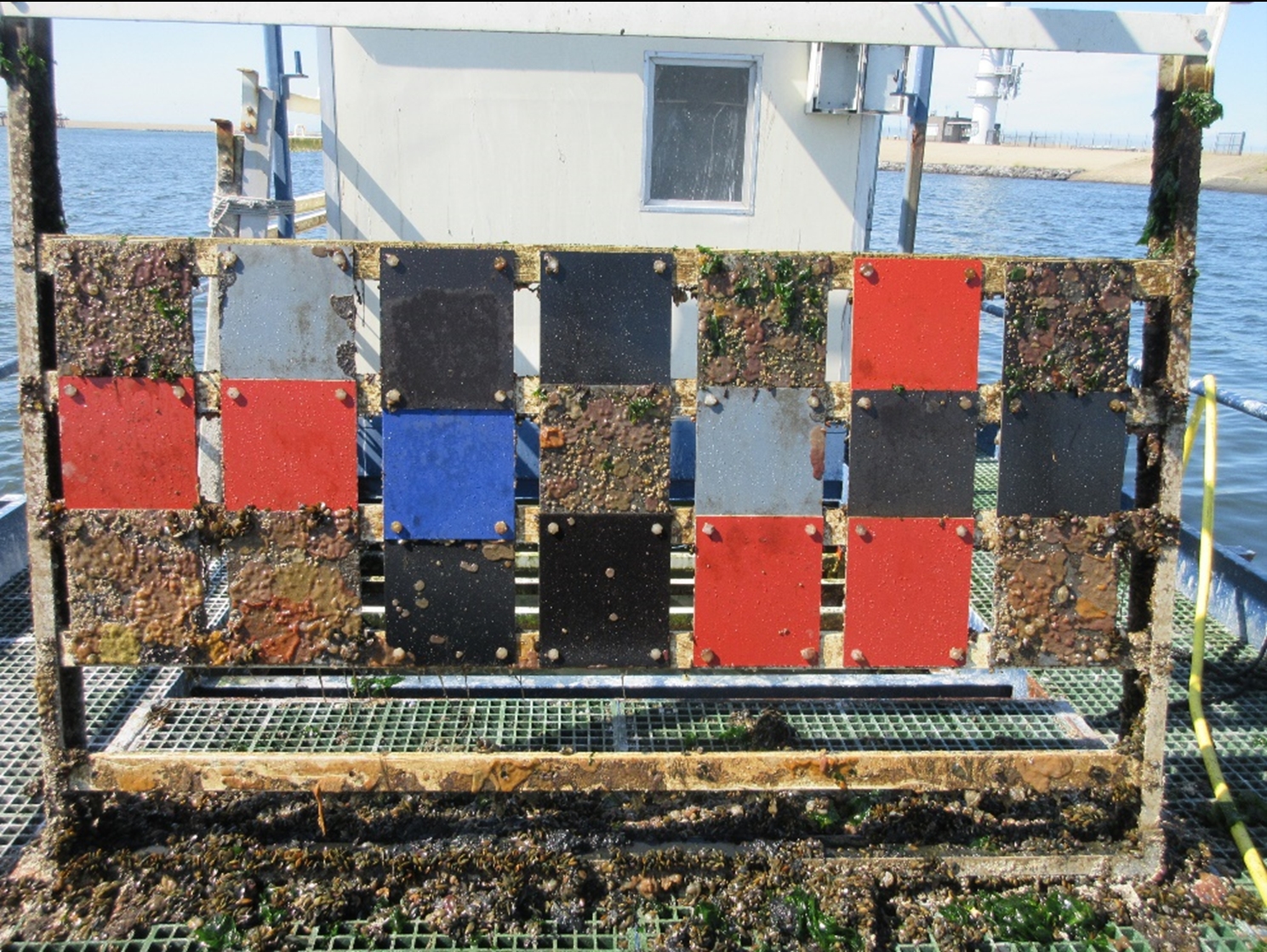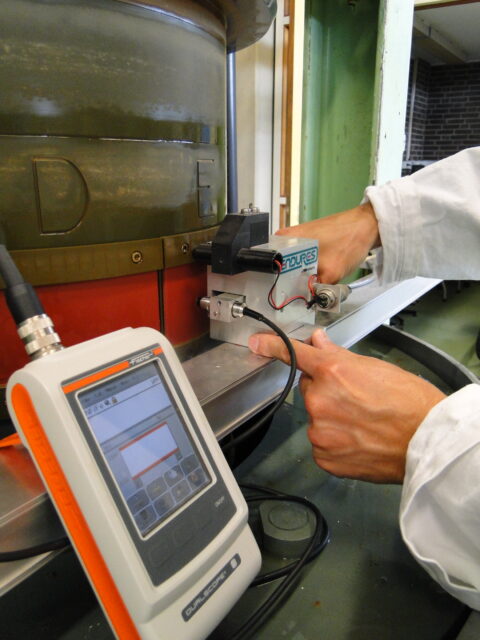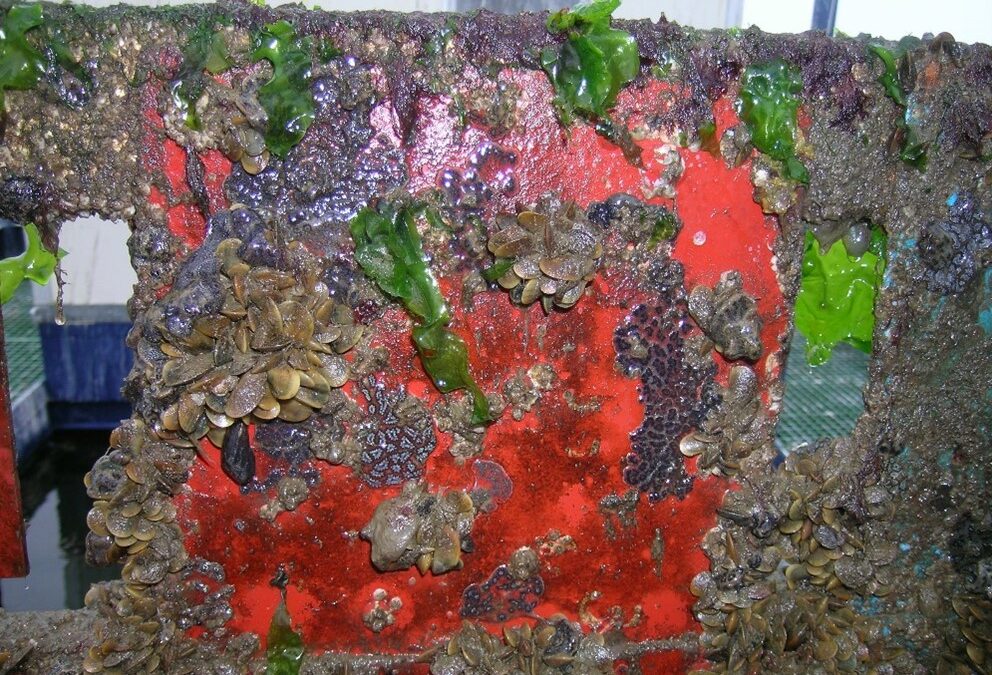As for many ships fuel consumption may account for fifty per cent of operating costs, the added drag caused by biofouling has severe economic consequences. Increase in fuel consumption and the associated increase in greenhouse gas emission are obviously not in line with the concept of green shipping. This makes biofouling an issue that has to be tackled.

This article was written by Job Klijnstra MSc, PhD (pictured), Expert Fouling Control & Material Protection at Endures BV, job.klijnstra@endures.nl. It was published in SWZ|Maritime’s February 2022 issue. Endures BV, based in Den Helder, the Netherlands, is an independent contract laboratory for R&D and consultancy on corrosion protection and antifouling.
Biofouling is a serious issue for the shipping industry. It is a natural process that can happen in any type of water. Many factors such as temperature, salinity, geographic location, water quality and seasonal variability may have influence on the fouling process, but most severe fouling conditions are usually found in (tropical) marine water.
Major consequence of biofouling on a ship hull is that it will increase the surface roughness of the vessel and that will give added friction drag and increases fuel consumption. This is known from many papers in scientific literature. To illustrate how large the added drag effects can be: data published by Schultz [1] in 2007 reveal that the presence of a heavy slime biofilm may give a nineteen per cent increase in required shaft power to sustain a speed of 15 knots. For other categories of fouling, such as seaweed and barnacles, the increase in required shaft power even goes up to 33 per cent and 52 per cent respectively.
Biofouling is not only a problem for ship hulls, it also takes place in so-called niche areas (sea chests, water intakes, thruster tunnels, etc.) and it can give severe problems in seawater cooling systems. Moreover, biofouling in niche areas may give biosecurity risks with the spread of marine invasive species. However, this article is focused on fouling control on ship hulls and will not cover seawater systems and niche areas.
The following sections will give an overview of currently used fouling control coatings on seagoing vessels, an overview of methods suitable for performance testing of fouling control coatings and a small section on recent developments in in-water hull cleaning.
Antifouling coatings currently used in commercial shipping can be separated in two major groups: chemically active coatings, usually called self-polishing coatings (SPCs) and fouling control coatings that are biocide-free, commonly named fouling release coatings (FRCs). The first group has by far the largest market share, fouling release coatings perhaps account for ten per cent of the market.
Also read: Study says anti-fouling is major source of marine microplastics pollution
Chemically active coatings
The efficacy of chemically active antifouling coatings relies on the release of toxic substances, so-called biocides from the coating. This way, a hostile environment is created close to the coating surface in which larvae and juvenile stages of fouling organisms cannot survive.
The working principle of chemically active coatings is based on controlled diffusion of water into the coating. Water soluble pigments and biocides in the coating dissolve near the paint surface and leach into the seawater. By playing around with the composition of the polymeric binder paint, companies can produce antifouling paints with different polishing behaviour.
High speed vessels that have very little or short periods of idle time can use low-polishing products, whereas ships sailing at lower speeds or with lower activity (that is, longer idle times) may need coating systems with a higher polishing rate.
As is clearly indicated in the name, SPCs polish away over time, biocides and other paint components are released into the sea, so vessels with an SPC always need a recoat at the end of the predicted lifetime.

More than twenty years ago, the use of organotin based paints was forbidden under IMO regulation. Since then, antifouling paints with cuprous oxide (Cu2O) as main biocide dominate the market. Copper content of these products may go up to fifty per cent on weight basis. Next to copper, other, so-called booster biocides may be present in order to give the product better activity against different groups of fouling organisms.
In the EU, antifouling products are regulated under the Biocidal Product Regulation (BPR). Authorisation of an antifouling paint is done on a large set of criteria that have to be met; an important criterion, apart from various toxicological requirements, is that the product has shown sufficient efficacy under relevant fouling conditions.
Next to this, the environmental consequences of using a coating with biocides are evaluated in a dedicated risk assessment. Only after approval of the biocide(s) and the coating product that contains them, a coating supplier is allowed to bring the product to the market.
In the Netherlands, there currently are 47 different antifouling coatings registered and allowed to be applied [2]. Out of these 47 products, seventeen have approval to be used on pleasure boats and can be applied by amateurs. All other products are registered for use on seagoing vessels and can only be applied by professional paint applicators.
Two relatively new biocides are now available that have sufficient activity to replace cuprous oxide in self-polishing paints. This way, effective copper-free antifouling paints can be made. In the Netherlands, paints with these biocides do not have a registration yet.
Fouling release coatings
Fouling release coatings (FRCs) cannot prevent the attachment of fouling organisms, but the bond between the organism and the coating is weak due to physical properties of the coating surface such as: low surface free energy, low elastic modulus and smooth surface at a molecular level. With their physical working mechanism, FRCs do not fall under the definition of chemically active coatings and do not require registration under the BPR.
Due to the weak adhesion, attached organisms can easily be removed by water shear stress when a ship starts sailing at a certain speed. The speed at which such (self) cleaning takes place varies with the type of fouling organism and also varies between products of different suppliers.
Current commercially available FRCs are based on silicon elastomers and fluoropolymers. In newly applied condition, FRCs generally give better friction drag performance, but over time, after a few years, this advantage may gradually diminish. Silicone based FRCs are more susceptible to mechanical damage and when the surface is damaged, the product loses its efficacy at that particular spot.
Costs of FRCs are substantially higher than those of SPCs, but the effective lifetime of an FRC can be significantly longer when it remains undamaged. Silicone coatings do not rely on polishing or depletion mechanisms like SPCs do.

In comparison to SPCs, the application conditions for silicone based fouling release coatings are more critical and not every shipyard has dedicated application facilities for FRCs available.
For a few years now, some silicone based products have come on the market that also contain a small amount of biocide. They can be seen as hybrid coatings that have good fouling release properties combined with chemical activity against specific fouling groups. These hybrid coatings also fall under the BPR, but in the Netherlands they have not been registered yet.
Another type of biocide-free coating that is often used on ice-going vessels is a hard coating without inherent antifouling properties, but good resistance to in-water cleaning. The frequency of cleaning depends on sailing area and operational profile of the vessel. Ferries in the eastern Baltic Sea are provided with hard coatings that are cleaned on a weekly or biweekly basis [3].
Other biocide-free technologies
The use of adhesive foils with antifouling properties has been known for some time already. One such product is provided with a top layer of small nylon fibres that have a deterrent effect on barnacles. Some other products have a silicone based top layer with fouling release properties. So far, foil based products have mainly been used on pleasure boats; on large seagoing vessels they have only been tested on a small scale.
Ultrasound as an antifouling technology has already been available on the market for pleasure boats for a long time. Next to this, it has also found application for fouling control in seawater cooling systems. For hull application, tests have been conducted in the past, but always on vessels with an antifouling coating.
Also read: Dutch naval landing craft equipped with ultrasonic anti-fouling
The last (physical) principle I want to mention here is fouling control by UV light. This technology is very effective against any type of fouling as long as the organisms are within range of the UV source. Recently, a UV cooler was brought to market that can be installed in seawater cooling systems on board ships. For hull application, the technology is still under development.
Also read: New anti-fouling solution uses UV light
Performance testing of antifouling coatings
The major function of antifouling coatings is to keep added friction drag due to biofouling accumulation on a ship hull at a minimum. Performance testing of antifouling products, however, is mainly based on static raft exposure tests (ASTM D3623/D6990) or polishing tests in seawater (ASTM D4938). Both methods only give data that indirectly say something about friction drag properties.

The value of a static raft exposure test, however, is that it reflects a worst case scenario for an antifouling coating because fouling will only settle when a ship is laying idle. Therefore, a static raft test is an appropriate “simulated field test” according to the European Chemicals Agency (ECHA) when carried out as described in their BPR Guidance Document [4].
In such tests, coated panels are exposed in the sea for one fouling season during which regular inspections and photos are made. Data collected are percentage coverage by different groups of fouling organisms and from these data a Fouling Resistance (FR) rate is derived. The performance of an antifouling coating is evaluated on pass/fail criteria in the BPR Guidance Document. The test indicates the ability of a coating to prevent settlement of fouling organisms.
As such, it is most suitable for efficacy testing of chemically active coatings: as long as a coating is leaching sufficient amounts of biocide(s), it will not foul. Except for registration purposes, a static raft test is also suitable as a pilot test to sort out whether a new type of (nano) coating has potential for antifouling applications.
For the biocide-free FRCs, the static test procedure is less suitable because these coatings do foul to some extent. Here, the criterion for performance evaluation should be: How easy can fouling be removed from the surface? To answer this question, research laboratory Endures has developed a dedicated test protocol that can simulate a ship’s operational profile.

In this static/dynamic performance test, the raft is used for static exposure (simulating idle time) and a rotor drum in seawater for dynamic exposure (simulating a sailing vessel). Questions that can be answered then are:
- How much fouling will develop after different periods of idle time?
- At what (rotation) speed can such fouling be removed again?
The answer to the first question gives an indication of the so-called idle day’s tolerance of a hull coating. The second will reveal how fast a vessel should go (and for how long) to get rid of the fouling. Repeating the test cycle (several times) may reveal the long term performance under static/dynamic conditions (see figure with test protocol). This test procedure can be used for both FRCs and SPCs.
To establish the minimal speed required for self-cleaning of hull coatings, the same test equipment can be used. Here, the test protocol involves two steps: static exposure of coated panels to fouling for short periods, followed by rotating drum testing in seawater at increasing speed (5-30 knots) for several rotation times. Taking pictures of the coatings after each speed step will reveal the coatings’ foul release properties. This way, different coating products can be compared on foul release properties at various sailing speeds.
Results from performance tests on fouling release properties or idle day’s tolerance of hull coatings can give shipowners and operators relevant information regarding the choice of a suitable coating. Operating a vessel under conditions other than design speed or profile, may have consequences for the choice of a suitable hull coating.
In-water hull cleaning
Even effective antifouling coatings do not always keep vessels free from fouling. Especially when ships are operating at reduced activity, the hull may foul to an undesirable extent. This fouling can be removed by in-water hull cleaning.
Model studies of the US Navy [5] have shown that cleaning the ship hull can clearly reduce friction resistance. The largest reduction is obtained when cleaning the vertical sides, but cleaning the bow area or only the waterline also gives significant drag reduction when normalised to surface area.
Two types of in-water cleaning procedures can be discriminated:
- Pro-active cleaning that is done at an early stage when only slime and incipient fouling have settled.
- Reactive cleaning that is done at a later stage when larger fouling organisms (macro-fouling) are present.
Pro-active cleaning (often called hull grooming) needs to be done more often and can use softer cleaning tools; reactive cleaning may need more robust cleaning principles in order to remove hard fouling and the cleaning device should have a capture system for collection of wash water, coating particles and fouling debris.
In the Netherlands, a few companies already provide (reactive) hull cleaning services, with different devices and cleaning tools, always in combination with a capture system. To my knowledge, hull grooming actions have not been undertaken yet.
Regulation of in-water hull cleaning activities is getting increased attention. Countries like New Zealand and the United States are setting the scene [6] and have regulation in place. But the shipping industry also gets active now with BIMCO having published two guideline documents [7] for an industry standard and approval procedure for cleaning companies in 2021. And last year, the port of Bremen (Germany) stated in a press release [8] that it wants to stimulate pro-active cleaning on biocide-free coatings as a replacement of the use of biocidal coatings.
So far, the BIMCO guideline only talks about reactive cleaning with capture, the concept of hull grooming is not covered. Also not covered in the BIMCO documents is how cleaning might affect the condition and (long term) performance of the coating. Cleaning a selfpolishing paint might give the risk of a reduction in layer thickness, biocide content and shorter effective lifetime. Silicone based coatings are softer than SPCs, so may need different cleaning tools to avoid damage.
For both types of coatings, there is hardly any information yet on what cleaning tools and protocol should be used without compromising the effective lifetime of the coating. This knowledge gap should be filled with dedicated research.

In-water cleaning has strong potential
The large majority of current antifouling products are chemically active coatings that emit biocides and paint components to the aquatic environment. Changing to biocide-free fouling control products may give a lower environmental footprint, provided that they show similar good performance. Changing to biocide-free products that have insufficient efficacy does not contribute to green shipping.
In-water cleaning has strong potential as an additional tool in ship hull maintenance. When used on a biocide-free hull coating, this will help the shipping industry to lower its environmental impact.
References
- Schultz M. (2007), Effect of coating roughness and biofouling on ship resistance and powering, Biofouling 23: 331-341.
- Website College Toelating Gewasbeschermingsmiddelen en Biocide: https://www.ctgb.nl/
- Dr. B. Watermann, personal communication (2021).
- European Chemical Agency (ECHA), Guidance Document on the BPR Vol. II – Efficacy: Assessment and Evaluation (parts B & C), version 4, December 2021.
- Vargas, Shan & Holm (2018), Using CFD to predict ship resistance due to biofouling, presentation International Congress Marine Corrosion, June 2018, Melbourne Florida, USA.
- Tamburri, Davidson, First, Scianni, Newcomer, Inglis, Georgiadis, Barnes & Ruiz (2020), In-water cleaning and capture to remove ship biofouling: an initial evaluation of efficacy and environmental safety, Frontiers in Marine Science 7: 437.
- Baltic and International Maritime Council (BIMCO) 2021, Approval procedure for in-water cleaning companies & Industry standard on in-water cleaning with capture.
- Port of Bremen (2021), Guideline for the issue of inwater cleaning permits in the ports of Bremen.
Picture (top): Biofouling diversity.
Want to read more SWZ articles? Our digital archive is once again available to subscribers and they can read the digitial version of our February issue there. Subscribers can register here to gain access. Not yet a subscriber? Visit our subscription page.
Also read: European Inventor Award for Dutch antifouling solution








